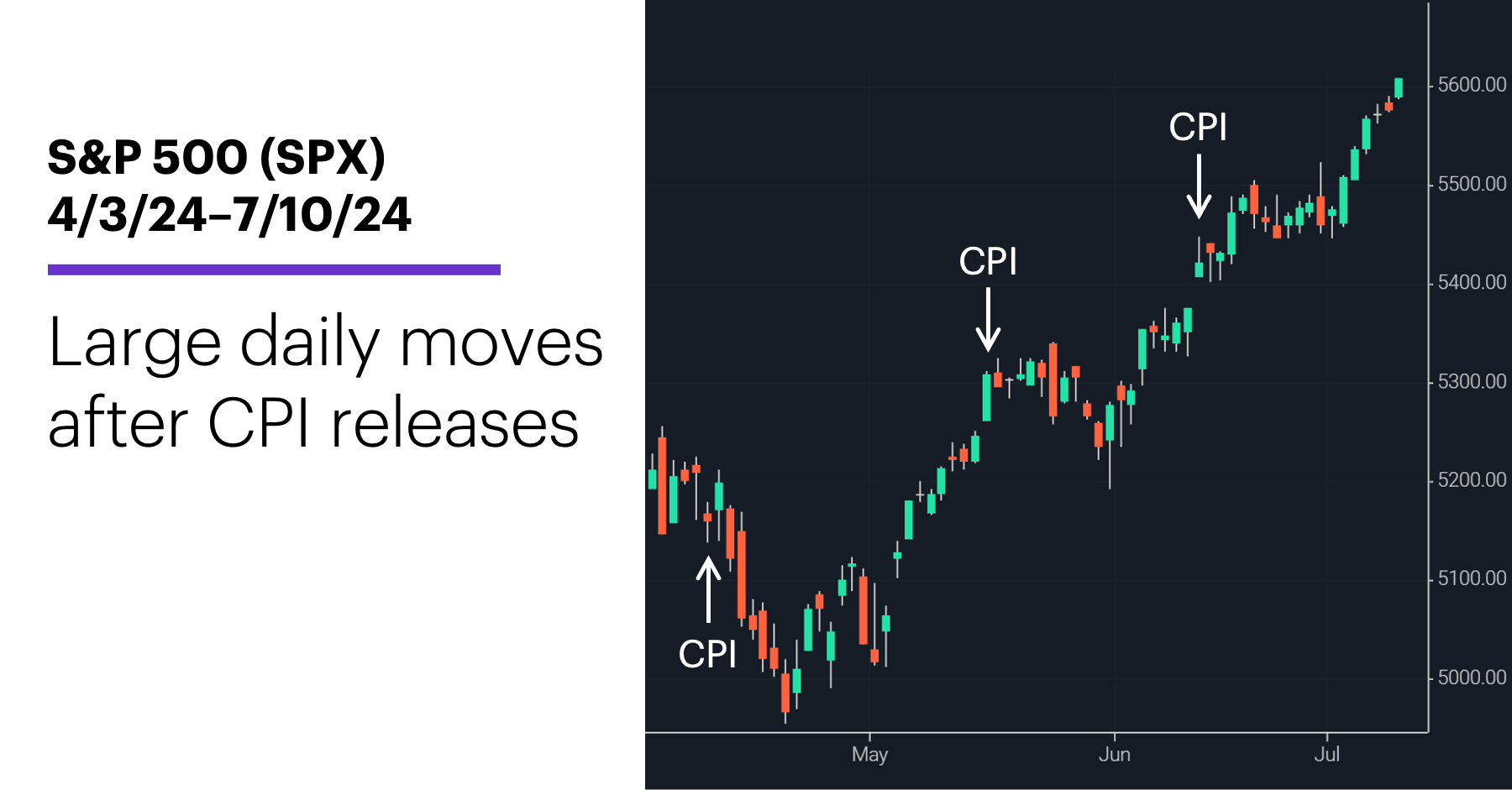Looking past inflation-report volatility
- Recent CPI reports followed by sizable index moves
- 2022 not representative of longer-term results
- Five days after CPI have underperformed, on average
It’s difficult to imagine today, but it wasn’t that long ago that monthly inflation numbers like the Consumer Price Index (CPI), Producer Price Index (PPI), and PCE Price Index were almost economic afterthoughts.
For a long time after the 2008-2009 financial crisis, the primary worry was that the economy wasn’t inflating enough—most economists and traders would have welcomed upside surprises from the major inflation gauges. And for several years, relative stability in these numbers appeared to lessen their immediate impact on the markets.
That changed in the post-pandemic world. As central banks around the world slashed interest rates and flooded the market with liquidity to revive the global economy, inflation eventually reached levels not seen in the US since the 1980s.
The CPI, PPI, and PCE suddenly reemerged as economic data points with the ability to trigger significant moves, at least temporarily. The past three CPI releases, for instance, have all been followed by larger-than-average daily moves in the S&P 500 (SPX)—down 1% on April 10, and up 1.2% and 0.9% on May 15 and June 12, respectively:

Source: Power E*TRADE (For illustration purposes. Not a recommendation. Note: It is not possible to invest directly in an index.)
The stock market’s typical reaction to these reports has shifted in recent years. For example, in 2022, when the SPX slid into a bear market, the SPX closed lower after seven of 12 CPI releases. But that was out of character compared to all the results from the past five years. From July 2019 through the end of 2021, the SPX closed higher after 57% CPI releases. That’s actually the same percentage for the 30 CPI reports released since then, because the SPX closed higher after 12 of 18 CPI reports since the beginning of 2023.
But as most traders are aware (and as the chart shows), the market has often exhibited a great deal of short-term volatility after these reports, sometimes reversing the initial move, at least partially, over the next few days. Since July 2019, the SPX has, slightly more often than not, lost ground in the five trading days after a CPI report—30 of 58 times overall, and 18 of the past 30.
Market Mover Update: Chipotle (CMG) has been all over the LiveAction scans for unusual options activity this week. On Wednesday it remained on top of the unusual open interest scan, and also appeared again on the scans for high call and put volume. The stock stabilized yesterday after several days of aggressive selling (see “Stock splits in the spotlight”).
Today’s numbers include (all times ET): CPI (8:30 a.m.), weekly jobless claims (8:30 a.m.), EIA Natural Gas Report (10:30 a.m.).
Today’s earnings include (all times ET): Conagra Brands (CAG), Cintas (CTAS), Delta Air Lines (DAL), PepsiCo (PEP).
Click here to log on to your account or learn more about E*TRADE's trading platforms, or follow the Company on Twitter, @ETRADE, for useful trading and investing insights.
1 All figures reflect S&P 500 (SPX) daily closing prices, July 2019–July 2024. The “five trading days after a CPI report” refers to the index’s change from the close of the day the report was released to the close five trading days later. Supporting document available upon request.